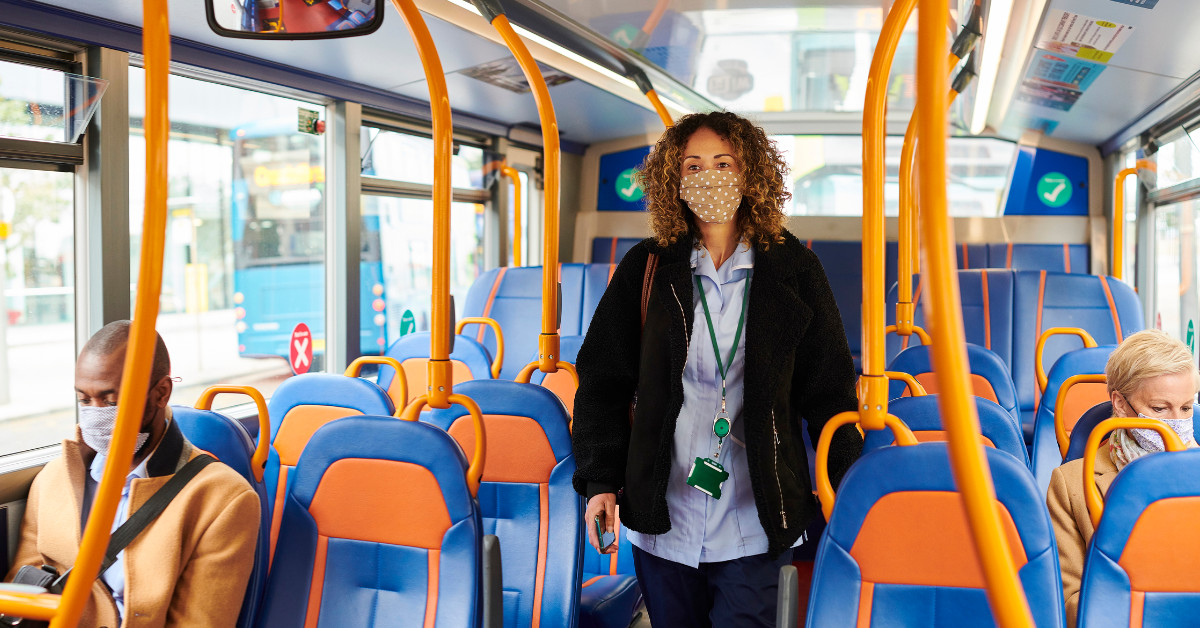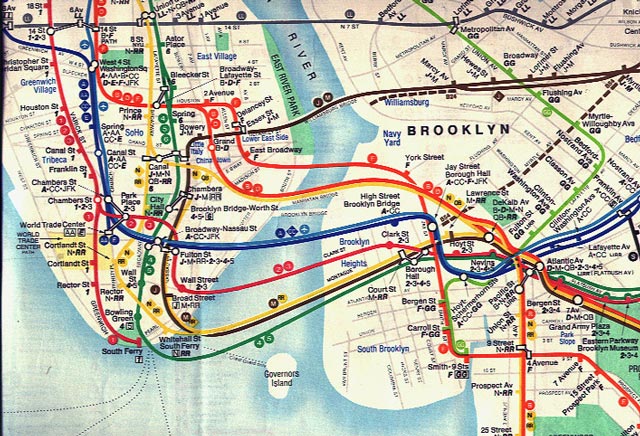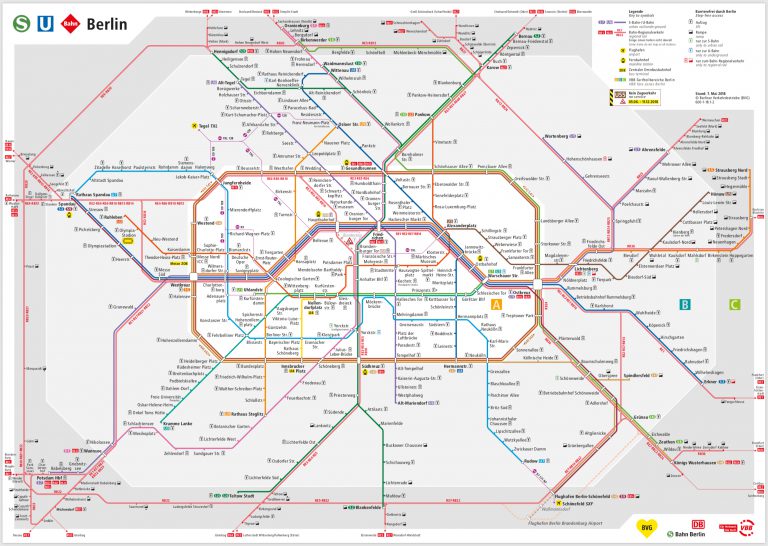Imagine How COVID-19 Could Reshape Mobility
Published in Mass Transit – December 17, 2020
How does public transit defy dire predictions about its future? Before we think about restoring pre-pandemic commutes, let’s listen to some of transit’s most vital–and essential–customers. Speaking to us from 2021, a year from now, Cecilia and Enrique describe how the pandemic has changed what they require from their transit providers.
New Priorities
“Before COVID-19,” says Cecilia, a nurse, “early every morning I stood shoulder-to-shoulder on a packed rush-hour bus to commute to work at a large metropolitan hospital. Now, I’m working a new shift from 5AM-1PM to ensure I’m traveling during a less busy time of day. I’m also able to check on my transit app before I activate my ticket to confirm the next bus has room for me before I board.”
After seeing how important it is to maintain safe physical distance to limit the spread of COVID-19, even as vaccine testing and distribution progress, Cecilia’s employer restructured its shifts for nurses and other frontline patient-care professionals. Now they rotate at 5AM, 1PM, and 9PM. This ensures hospital employees are traveling at times that minimize overlap with shift changes for law enforcement, logistics, construction, and other location-essential fields.
Enrique works the night shift at a nearby factory. “I started out as a sheetmetal fabricator, working my way up to production line manager and shop steward.” When the COVID-19 pandemic hit, he was furloughed, but his employer received a federal loan that enabled them to shift production to batteries for electric buses. ”I grew up riding the bus, but before COVID-19, I was thinking about buying a car to get to work because the bus was becoming so unreliable. When we got off work at four in the morning, we used to race out and squeeze into the bus that came right at 4:00 sharp, because the next one wasn’t coming for another 45 minutes.”
Because of the focus on location-essential workers during the first wave of the pandemic, Enrique says bus service has become much more reliable, and frequent. “Now I can take the 4:10AM bus, which is easier to catch since it’s timed to come ten minutes after the shift change. If I miss that one, I’m only waiting another ten minutes for the next one! And if our shift ends early, our company alerts the transit agency so they can send a bus earlier.”
Glad to be back at work–and able to do his part to help the environment–Enrique appreciates how the local transit agency has adapted to his new work schedule. “I am relieved I no longer have to consider the extra expense of buying a car,” he says. The increased service frequency and better bus scheduling is a result of new collaboration between the transit agency and employers to better align service on key routes that serve their facilities. It ensures high-enough frequency to protect customers by preventing crowding.

Enrique’s mother Maria lives with the family. Maria retired after 30 years as a school security guard to look after her grandchildren Rosa and Miguel. Before COVID-19, she wanted to find part-time work but her mobility issues, owing to chronic back pain, limited her options. After COVID-19 compelled many employers to embrace work from home, Maria was able to find work with the local transit agency as a home-based customer service representative.
Maria helps customers plan their transit trips and buy tickets on the agency’s app. She also helps customers with a new program: registering as regular riders on specific bus routes and train lines. Voluntary registration helps the agency balance supply with demand. In return, customers receive a recurring discount on their weekly or monthly tickets.
Rosa is in eleventh grade, and Miguel just started high school. The new reality of education has necessitated a mix of remote learning and small-group instruction designed to keep occupancy in school buildings to 50%. Rosa also plays soccer, and Miguel swims competitively. Rosa notes that, “we now practice in groups–red white and blue–to reduce the risk that an infection could incapacitate our entire team.” Miguel points out that athletes must undergo biweekly testing. “We can compete only if we have tested negative for COVID-19,” Miguel says. For further protection, only athletes are allowed at event venues, and games are live streamed for families and fans.
The family lives in a working-class neighborhood just outside a major city. Their municipality still maintains the character of a hundred years ago, with tightly packed homes, four-story walk ups, and corner stores. The family lives in a neighborhood that had begun to experience gentrification as home buyers recognized what the family already enjoys: close proximity to the next-door city by bus, train, or light rail, and an easy walk to buy groceries, fill a prescription, or pick up a lunch order. Prompted by COVID-19, the local government enacted new land-use policies to promote infill development. The increased housing stock protects the existing community from displacement.

The state’s economic development officials also offered incentives to employers to occupy several vacant industrial buildings with location-essential manufacturing jobs, so more members of the community have the option to walk to work. To support this new mobility, and provide light, air and open green space, the local government permanently opened 50% of its streets to non-vehicle use, and created a network of dedicated bus lanes throughout the other 50%. The “Open Streets” program provides more opportunities for walking, biking and physical distancing, safe trips to local retail, schools, and community facilities, and swift bus service that is no longer subject to vehicle congestion.
Funding the Future of Transit
These changed priorities and new ways of serving customers are funded by the Federal-Aid Health and Transit Act of 2021. Like the landmark Federal-Aid Highway Act of 1956, the 2021 bill demonstrates a huge federal commitment to investing in national mobility, and it passed both houses of Congress with bipartisan support. The key to its passage was legislators’ collective recognition that public transit is widely supported by voters as a utility–much like water and power–that is essential to protecting public health and national security.
The Transit Act of 2021 makes permanent the change started a year earlier by the CARES Act of 2020, which broke a longstanding precedent by enabling the Federal Transit Administration to fund transit operations. Prompted by the public health emergency, the landmark change in the FTA’s traditional funding role created a strong rationale for the Transit Act of 2021. Both the 2020 and 2021 legislation now equip transit providers with the resources to run service at a frequency, flexibility, and capacity that serves the diverse needs of their communities.
Recognizing that the pandemic had decimated cultural institutions’ revenue, Congress included in the law a new, national “transit arts” program. It requires agencies to allocate 1% of their new federal funding to programs that increase public transit travel to museums, zoos, botanical gardens, and other cultural destinations.
“Rosa was so happy when their favorite museum in the city reopened after the first wave of the pandemic,” Enrique says. “What’s cool is that we can use our transit app to pay our fares, check for a non-crowded bus into the city, and also get a break on our museum admission.” As a result, Cecilia, Enrique, and their children have become regular sources of new weekend revenue for the transit agency, as well as for their expanding “must do” list of attractions.
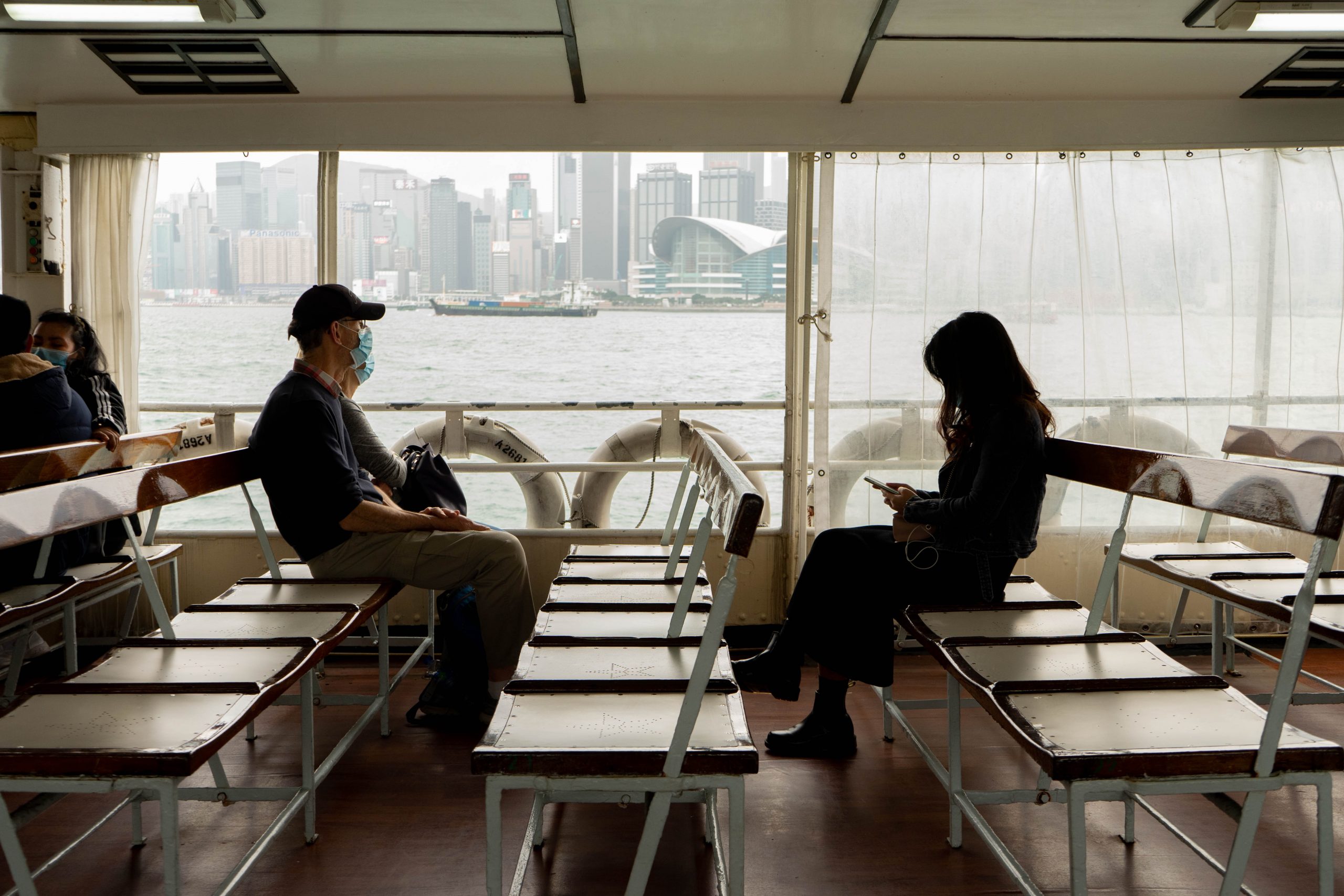
What Have We Learned?
Putting ourselves in the role of public transit professionals in 2021, what have we learned by looking at the lives of our customers like Cecilia, Enrique, Rosa, Miguel, and Maria? Quite a lot!
To best serve their most transit-dependent customers, agencies in 2021 deploy equipment and staff for 24/7 schedules to accommodate the needs of those working beyond formerly typical “commute” times. This all-day, all-week service has benefited vast numbers of lower-income people, whose jobs and educational opportunities never followed the nine-to-five peak.
Employers and employees in 2021 have embraced working from home, further enabling transit agencies to break free from the constraints that traditional, nine-to-five peak-hour service placed on their ability to offer more service at other times. Where working from home is not possible, employers and employees have migrated to decentralized workplaces. Recognizing this, more transit agencies have supplemented their hub-and-spoke routes with service patterned on a spider web of interconnected nodes and modes.
Agencies have also seen that “demand destruction” for office-tower rentals, home-sharing services, and other industry sectors presented both a challenge and an opportunity to create and meet new demands for mobility. For instance, as center-city office-tower property owners began to convert under-performing, stranded-asset office space into residential units, agencies adapted service to support the resulting shift in transit supply and demand.
Transit agencies have also realized that many of their own office workers could, and should, work from home. They have discovered that embracing remote work enabled them to access a broader pool of talented people that enhanced their ability to relate to their customers. They are supporting all employees–those that could work from home, and those on the frontlines of service–with financial incentives such as subsidized day care. They have updated code-of-conduct policies to embody a mentally-healthy work-life balance, and avoid succumbing to the notion that employees working from home are always “on call.” Recognizing that customers follow leadership, transit agency leaders have modeled best practices such as physical distancing, the wearing of face masks, and conducting meetings remotely.

Transit agencies have taken on a new role. They have become public utilities supported by dedicated revenue from taxation rather than subsidy-chasing quasi-government entities. In their new role, they have accelerated “give backs” to communities within their service areas. For example, they lent planners to help communities replace street traffic with pedestrian-friendly and transit-friendly street design that enhanced light, air, and open green space, outdoor retail and eating, stormwater and climate-change mitigation, and higher real estate values.
Recognizing that members of their communities who previously worked as ride-hail drivers were out of work, agencies created accelerated certification programs to help these people convert their contract driving experience to commercial drivers licenses so they could become full-time bus, microtransit, or paratransit drivers with benefits.
By strengthening bus and train service, agencies helped reduce regional greenhouse gas emissions. By accelerating the transition to all-electric fleets, they are contributing to the broader economic recovery, and better protecting employees traditionally impacted by health issues resulting from prolonged exposure to fossil-fuel powered internal combustion engines. They also contribute to climate-resilience by creatively adapting real estate assets to new climate-mitigation and climate-adaptation uses.
Public transit providers adapted to the new realities of the pandemic-altered ecosystem in which they operate. They did so by seeking and using their “seat at the table” at decision-making meetings of government officials, social-welfare entities, industry leaders, education providers and cultural institutions. In those discussions, they both understood and helped shape the environment in which they optimized transit service.
Reality or myth? Aspiration or achievement? It depends.
Three Steps Forward
As transit professionals right now, in 2020, we can start to create a new 2021 world of, by, and for public transit. Here are three steps forward.
Legislate for change. Advocate and advance legislation that positions transit as a well-managed, state-of-the-art public utility. Help transit advance beyond the vestigial standard of its private sector predecessor railroads and bus companies. Be attentive to decisions about service that favor the economically and socially stratified segment of customers who only use it to commute to 9-5 jobs. Recognize that those decisions may unintentionally limit transit’s ability to support equity. Seize the opportunity to reimagine transit based on its ability to benefit the largest number of people.
Build cohesive policy. Initiate new collaboration with key players–retail, logistics, real estate, architecture, education, health care, and other fields–to jointly reshape the realm that transit supports. Take into account that all of these sectors have a role to play in shaping clear policy goals. For instance, employers can structure work arrangements to avoid peaks that cause crowding on transit. To aid working parents and care-givers, government can fund day care, as it already supports schools. Communities can support abundant, all-day transit that more fully benefits a greater diversity of people.
Architects, planners, and transit agencies can coordinate land-use and network design decisions that best support transit availability and reliability. Transit agencies can also ensure more seamless mobility in the areas they serve by streamlining fare payment, and integrating bike share, micromobility, and microtransit into their networks. Enabling customers to plan, pay for, and pick up their ride, whether by bus, bike, or train can give customers greater confidence that they can get where they need to go safely and conveniently.
Plan beyond the pandemic. The pandemic that has begun in 2020 foreshadows the effects climate change likely will impose on society. Both the pandemic and climate change are existential issues. Both give us many interrelated opportunities to address them with intelligence, inclusiveness, and investment. For example, less vehicle use of our roads has contributed to the cleanest air many of us have seen in our lifetimes. Fully understanding that cleaner air has come at the cost of lost employment and decimated industries, our challenge now is to rethink all sectors of our lives to increase health and well-being in an equitable way. Those of us in public transit, for example, can provide mobility geared to serve as many people as possible, at all times of day and night. We can simultaneously increase convenience, strengthen safety, and mitigate the pace of climate change.
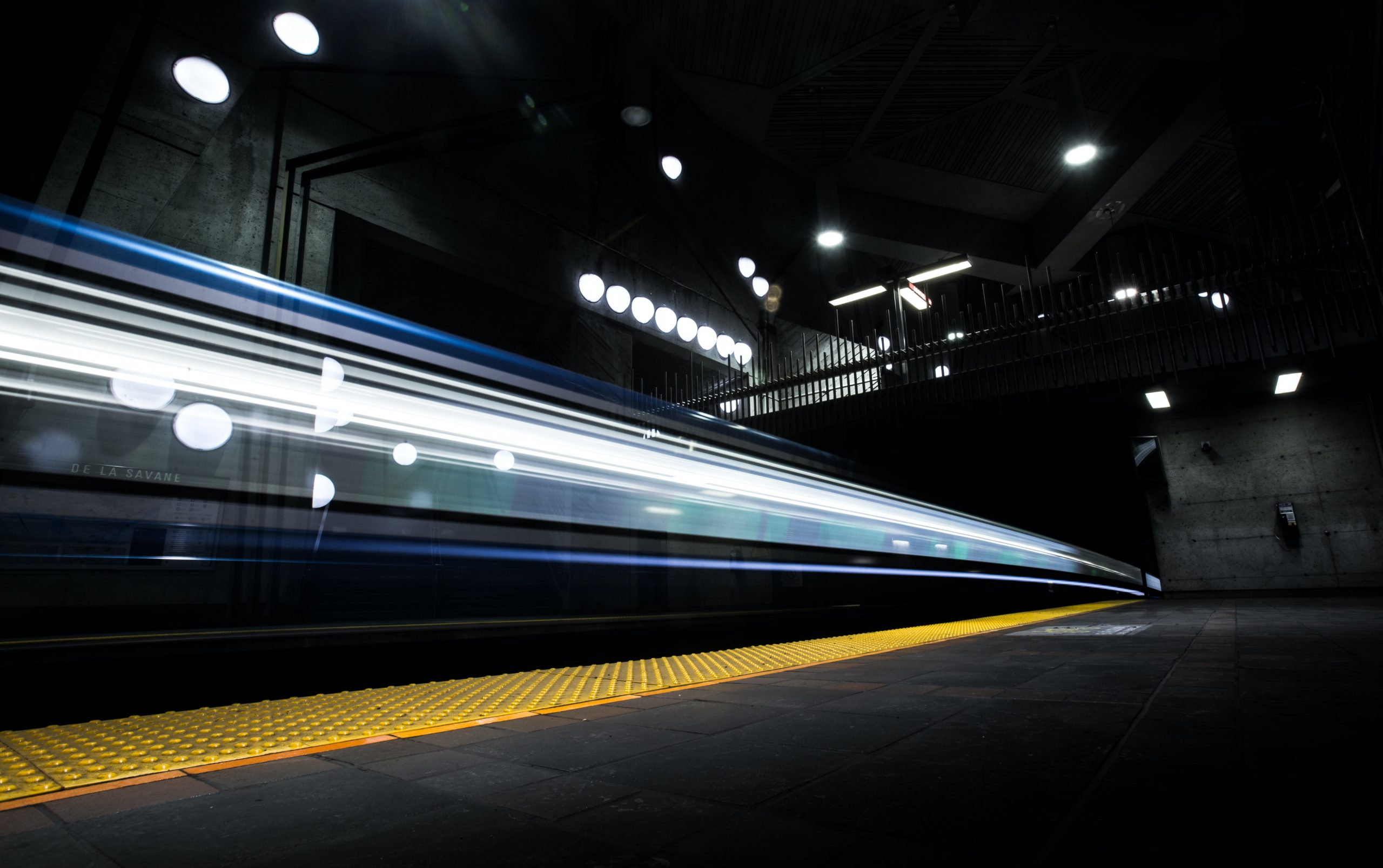
As we plan how to welcome customers back to transit, our reflex action, typically, is to ask: “Where and how do we take our customers?” As policy leaders, we will do better by asking “Where are our customers taking us?” “How can we meet their evolving needs and maximize their connectivity, accessibility, and mobility?”
Cecilia, Enrique, María, Rosa, and Miguel have shown us how they live and want to ride. Now it’s our job to provide.
Author’s Note: Thanks to my colleagues throughout the industry, including Jessica Alba, Jim Aloisi, Sara Holoubek, Allen Kratz, Jarrett Walker, and Jenny Wong, for providing invaluable feedback that strengthened the perspective of this policy paper.
